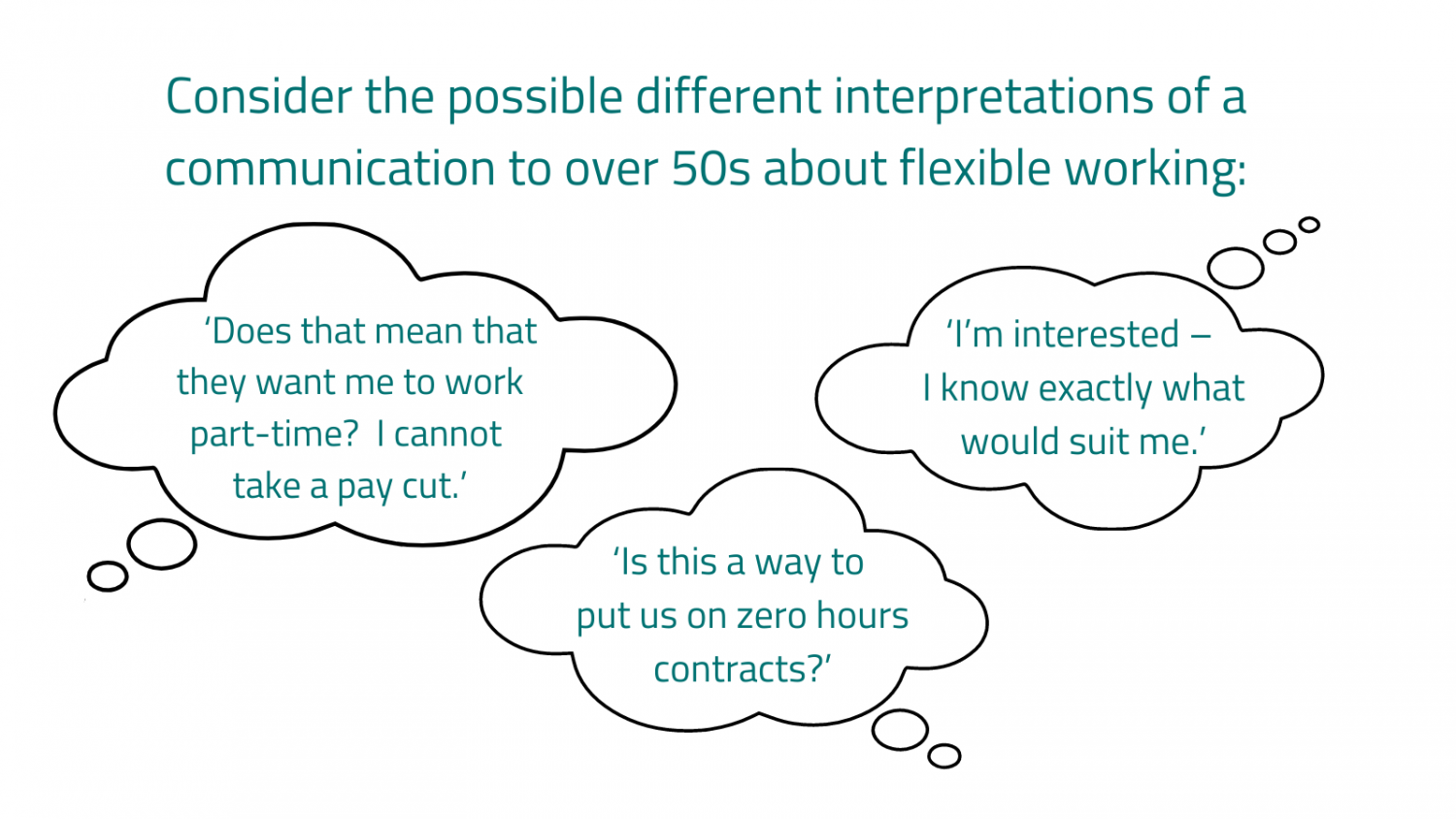

In a programme co-designed with Build UK, Timewise piloted flexible working in site-based teams at four leading construction firms. The results have proved that flexibility can be implemented successfully, despite the sector’s significant operational barriers.
Site-based construction work is a particularly tough nut to crack for flexible working. With its location based work, inter-dependent team roles, and a long hours’ culture created by rigid deadlines, the options for flexibility are more limited than for most sectors.
The demanding working patterns are believed to contribute to a troubling record on mental health and wellbeing, as well as challenges with gender diversity, so the sector has increasingly been searching for solutions.
In this programme of pilots, we tested a variety of flexible options that gave construction teams greater control over their working patterns. As our report shows:
We hope our learnings will inspire other construction firms to trial and roll out flexible working, in order to address skills shortages by attracting a wider audience (especially women), and look after the health and well-being of the workforce. Our report includes a 10 point plan with guidance for employers on how to do this, and also recommendations to the Construction Leadership Council to catalyse change at scale.
Our thanks go to BAM Construct, BAM Nuttall, Skanska UK and Willmott Dixon for their pioneering involvement in the pilots. Also to Build UK, Barclays LifeSkills and CITB for their support in making the programme possible.
Our working practices are changing. From the homeworking revolution to the increase in hybrid working, the debate on productivity and flexibility is likely to rage on for some time. These changes have also exposed and amplified existing inequalities, especially for part-time employees, who often work on the frontline in low-paid jobs.
Early in the pandemic, it immediately became clear that these roles were facing the brunt of job losses and changes in working hours. Furlough has been effective in keeping millions of employees in work, but it is masking significant challenges, especially for part-timers. And as we move towards economic recovery, there is a risk that the gap between the flex haves and have-nots, which existed before Covid-19, will widen significantly, leaving many frontline workers behind.
It is for this reason that we have launched Fair Flexible Futures, a campaign for change with the aim of making good jobs flexible and flexible jobs good. In this, the first in a series of Fair Flexible Futures reports, we present new analysis on how part-time employees are faring, and explore what more needs to be done to support them.
By Emma Stewart, Co-founder, Timewise

In 2020, while the UK was grappling with the pandemic, the Scottish government recognised that the impact on workplaces was likely to be long term, and that companies would need help to recalibrate their working practices in response. So they commissioned Timewise to create a Scotland-wide programme to create deep, lasting change at a systemic level.
These issues were already on the radar in Scotland; the government were conscious that many people who needed to work flexibly (such as parents, carers and those with disabilities) were struggling to access good quality work, and had already commissioned us to undertake a feasibility study to identify potential solutions. But it quickly became clear that the pandemic was only likely to amplify these issues, and that something large scale needed to be done.
To achieve this, we set out to encourage employers to advertise more jobs as flexible from day one, and to provide more tailored support for employees to help them find and secure the flexibility they need. Initially envisaged as an eight-month programme, it has now been extended to two years, to allow for a wider scope.
So, as we approach the half-way point, it’s a good time to take stock of what have we achieved and what our next steps will be.
The first strand of our programme set out to help employers adapt their working practices through and beyond the pandemic, and to ensure that they did so in a sustainable, inclusive way. We were also keen to encourage them to widen their recruitment processes to include flexible hiring.
So, supported by Flexibility Works, we ran a series of webinars for employers, offering clear, practical guidance on offering fair flexible work, and created two toolkits, one for employers, and one for employees.
In total, almost 500 organisations accessed our webinars, and more than 1,600 received our toolkits. And there’s every suggestion that they are acting on what they have learned. 85% of attendees noted that their session gave them practical ideas and action that they can take forward, and a number of organisations have contacted us for follow-up advice.
From the outset, we knew that the best way to have a wide impact would be to share knowledge, insights and best practice with influencers on the ground, and encourage them to pass it on. So the second strand of the programme was to create a network of change agents, and give them the training, tools and resources they need to support the people they work with.
The network includes employer-facing intermediaries (such as Scottish Enterprise, CBI Scotland and CIPD Scotland), and employee-facing intermediaries (including Capital City Partnership, who co-ran this work with us). Our network have advised 1,200 employers and over 1,000 employees; they have also shared our guidance with more than 5,300 employers and 5,800 employees. And we are starting to see evidence of real change in the way they are approaching conversations as a result.
For example, Scottish Enterprise, who provide business advice and grants for start-ups, are now advising all the organisations they work with to advertise jobs flexibly, and are working with us to build an expectation around this into their formal guidance. Similarly, Edinburgh City Council are now encouraging employers in their Recruitment Incentive Scheme to adapt working pattens to suit candidates with barriers; they are also exploring the idea of incorporating the question ‘Are you a flexible employer?’ into the application process to stimulate action.
Finally, we know from experience that having hard evidence for the size of a problem is a critical part of making change happen. So the third strand of our programme was a new Scotland-focused Flexible Jobs Index, tracking the proportion of jobs advertised with flexible options at the point of hire, before, during and after the first lockdown.
Our findings were pretty stark: only 1 in 4 jobs advertised in Scotland offer any kind of flexible working. And there has been surprisingly little change during the pandemic; the widespread move towards working from home is not being reflected in the recruitment process.
This lack of flexibly advertised jobs is a clear barrier to fair flex for all; with 3 in 4 jobs off-limits for those who need to work flexibly, opportunities for work or progression are scarce.
Looking ahead to the second half of the programme, it’s clear that we have a great deal to build on – and that there are still many hurdles to overcome. Change takes time, but we are keen to keep up the pace and deliver fairer, more inclusive ways of working across Scotland and beyond.
So we’ll continue our work with our network of change agents, and will be seeking to expand it; the more organisations we have on board, the bigger and faster the impact. In particular, we’re planning to work with REC to being recruiters into the network, and we’re talking to Scottish local authorities about joining us too.
We’ll also continue to provide training and guidance for employers on a range of relevant issues, responding to the changes in the workplace. For example, we are planning to run sessions on hybrid working, and on implementing fair flexible work in frontline roles. And of course, we’ll be tracking what works, and sharing what we learn, so that as many organisations as possible get on board with the need for Fair Flexible Work and start to take action.
It’s our hope that the work in Scotland will also inspire and inform change elsewhere. We’re planning to pilot a London-based version of our change agent network, based on our experiences in Scotland, and hopefully, that’s just the start. Our long-term aim is a UK government-led focus on Fair Flexible Work; we’ll keep you posted.
Published May 2021
By Melissa Jamieson, CEO, Timewise

Back when flexible working was less widespread, one of the most common objections was that it wasn’t compatible with client facing roles. There was a sense that anyone who had direct dealings with a client had to be ready and available at all times to respond to their every wish. Part-time, in particular, was seen as a no-no; how on earth could you tell a client that they had to wait a day?
And while I’d like to think that things, and minds, have changed (not least as a result of the shift in attitudes towards flex as a result of the pandemic), there is a lingering sense that making client-facing roles work on a part-time basis is more trouble than it’s worth.
It’s only fair to recognise that part-time can appear more challenging to implement than other forms of flexible working across all sectors. And having spent a number of years in advertising, I’m only too aware of the balancing act service companies have to play between clients’ and employees’ needs. But as we come out of the pandemic into an economic recovery, and we start developing and refining hybrid ways of working, it’s vital that part-time doesn’t get forgotten.
As I’ve explained elsewhere, offering part-time roles can support a range of business imperatives, from diversity and the gender pay gap to talent attraction and retention. It can boost your employer brand and show you are in tune with the growing number of people who are re-evaluating their priorities and seeking to work less. There’s a societal angle too, as it widens access for key groups who are unable to work full-time.
And, specifically for client-facing companies, where your product is a service, your people are your business. So looking after them, and giving them what they need to succeed, is nothing short of critical, not to mention a pivotal part of your ESG strategy.
I’d like to help reset the narrative on part-time for client-facing companies. So let’s explore some of the specific challenges – and some insights into how to overcome them.
The barriers to part-time which are particularly relevant to client-facing companies include:
But the good news is, none of these issues are insurmountable. Leaders of client-facing companies who want to open up access to part-time can do so. Here’s how.
Clearly, making a client-facing company part-time friendly won’t happen overnight; but for all the reasons noted above, it’s well worth the investment of your time. If you need any support, we’d be happy to provide it, whether through workshops and training or a more bespoke solution. To find out more or discuss your needs, please contact info@timewise.co.uk.
Published May 2021
The over 50s now stay in work longer, because they want or need to. They increasingly have to balance work with the changes that come with ageing (from physical changes to a desire for more control over how they spend their time). And they make up a third of the UK workforce.
Employers value the experience and skills that over 50s bring to their roles. But the power of flexible working as a retention tool for this demographic has not been given the same level of attention as it has for other groups such as working parents.

Timewise therefore partnered with the Centre for Ageing Better to explore how employers could best support older workers through flexible working. The key findings of the project are reported below, together with details of the methodology.
Although the mechanics of implementing flexible working are the same for all demographics, ‘what happens at the edges’ can be different for older workers:

Appreciating the needs and wants of over 50s will help to engage them in conversations about flexible working, and retain their skills and experience.
Our research and pilot programme explored feelings around whether there was a ‘hierarchy of acceptable reasons for working flexibly’. Both managers and staff felt that:

Flexible working initiatives aimed at older workers need to be carefully managed to ensure there are no perceptions of age discrimination. It’s important for employers to pre-empt how different people may respond, and factor this into communications. The best way to support flexibility for over 50s may be to make it:
Either
Or

This was an 18-month programme in two-phases:
Insights research: The first phase consisted of focus groups and surveys with six large employers: Guy’s and St Thomas’ NHS Foundation Trust, Leeds City Council, Legal & General, McDonalds, Sodexo and Whitbread. We spoke to more than 40 over 50s staff from these organisations, as well as 34 managers with older workers in their teams. We also ran a survey for the over 50s, with 421 respondents, to understand attitudes and perceptions about work-life balance and flexible working, and to gain an insight into their lived experience. This was conducted between November 2018 and February 2019.
Employer pilots: Our research was followed by pilots with Guy’s and St Thomas’ NHS Foundation Trust, and two divisions at Legal & General. The purpose of the pilots was to bring about changes in working patterns for a cohort of over 50s, providing them and their managers with the training and tools to implement and adapt to different flexible working patterns. This part of the programme ran from May 2019 to February 2020, and was completed prior to the covid-19 pandemic.

The coming of the multi-generational workplace has long been anticipated – and, according to the numbers, it’s arrived. One in three of today’s workers are aged over 50, and that proportion is set to rise; many people plan to work longer, either because they want to or need to. And employers can benefit from the skills and experience that they bring to their roles.
But despite the growth in numbers, the individual implications of ageing, and how they play out in the workplace, are not always understood or explicitly recognised. And nor is how the ageing process affects what an individual needs or wants from their job role.
So how can we make sure that employees continue to be supported, and valued, as they grow in age? According to the over 50s themselves, here is one workplace practice above all others that would allow them to work successfully for longer: flexible working. And as we all grapple with the long-term impact of the Covid-19 pandemic, this issue is all the more relevant.
Over 50s are likely to be more vulnerable to the virus than their younger counterparts; many also have caring responsibilities which make the ‘return to normal’ more complex. So making sure that these older workers have flexible working options is now more important than ever.
It’s for this reason that we partnered with the Centre for Ageing Better, and a range of employers, to explore how best to support older workers with flexible working.
We carried out research to understand their reasons for wanting to work flexibly and identify the barriers that were standing in the way. We also ran pilots with two employers to explore new ways to overcome them; you can download the full report here.
By Muriel Tersago, Principal Consultant, Timewise

Following government restrictions to limit the spread of the coronavirus, employers in all sectors are working through the implications for their business and their employees. There’s a lot of useful advice out there on topics such as supporting employees to work from home or how to run virtual meetings. But one group which is easy to overlook is older workers, typically defined as those over 50.
There are a number of reasons why this demographic need bespoke support, and a number of steps you can take as an employer to provide it, both in the current crisis and beyond. Here we set out the key points for you to think about.
In the short term, employers need to make sure that their older workers are being considered in any strategic or operational decisions that are made:
(1) Recognise the particular circumstances of this group
While many older workers are in good health, some do develop health conditions as they age, which might make them more vulnerable to coronavirus. They may also have caring responsibilities for high-risk elderly relatives. Critically, they may be unwilling to ask for help.
Suggested actions:
Line managers should proactively seek one-to-ones with older reports to discuss their needs and concerns, and explore adapting their work to fit.
HR could set up company-wide social networks for older workers, and sign-post to websites offering advice and information on relevant issues.
(2) Consider how employee contract decisions affect this group
Many employers are facing difficult decisions around reducing staff hours and redundancies. They are also having to understand and share information about the government’s financial support packages.
Some older workers, who are approaching retirement, may need to think carefully about how any changes to their working hours and employee status could impact their pensions, and other employee benefits such as healthcare cover.
Suggested actions:
It may take HR teams time to work through the implications of these issues and for leaders to decide on their preferred course of action. So, in addition to issuing a general holding statement, it is worth reassuring older workers that you understand their specific concerns.
(3) Be proactive about providing tech support
Although older workers are likely to be comfortable with the technology they use at work, some may be less familiar with the platforms and apps that support remote working.
Suggested actions:
Don’t assume that everyone is up to speed with existing or new technology. Provide clear and friendly one-page guidance documents before using a new platform, encourage people to practise, and invite questions.
How-to tips are often best provided by peers within a team, rather than a more formal conversation with the IT helpdesk. Consider setting up IT buddies, or appointing a ‘tech guru’ in the team who can help others.
(4) Seek their input on remote and flexible working
Flexible working can be used very successfully to help older workers ease into retirement. The changes brought about by the coronavirus mean we are all working differently and there is an opportunity to understand and share learnings from different groups, including older workers.
Suggested actions:
As a minimum, line managers should be checking in with all colleagues about how they are adjusting to any new patterns on a day-to-day level.
The next step is to take a more strategic look at its impact on individual roles, to evaluate what is working well and what could be done better. Exploring this specifically with older workers could help HR create a flexible pathway into retirement.
(5) Encourage staff to use downtime for personal or career planning
On a similar note, it could be worth encouraging older workers to use any downtime to reflect on their next steps, both inside and outside of work. The change of pace and environment offers an unusual opportunity for people to consider their options as they start looking towards retirement.
Suggested actions:
HR could provide guidelines and tools for individuals. The Centre for Ageing Better has developed a midlife MOT framework which provides a structure and ideas on what to consider.
HR or training departments may also want to alert employees to any training opportunities which are available.
It will be important to handle this issue sensitively, however, so older workers don’t fear they will be first in line for redundancy consultations.
It’s widely accepted that society will be different after coronavirus has passed. This will be reflected both in the workplace as a whole, and for specific groups of employees.
Here are five issues, which will impact older workers, to consider when you begin your post-pandemic planning.
It is also important to remember that, as Patrick Thomson from the Centre for Ageing Better recently noted, there are many over-50s working on the frontline right now, for whom remote working is not a possibility. These include care workers and NHS and retail employees, as well as people working in local government and education, who are keeping things running for the rest of us.
And when we exit this crisis, we need to ensure that we value these roles properly, and enable the older workers who are delivering them to have some say over how flexibly they work. It will be our duty to protect their well-being and living standards in future, as they are protecting us now.
If you would like support or information on any of the topics covered above, please contact Timewise or the Centre for Ageing Better.
Timewise and the Centre for Ageing Better ran an 18-month programme with employers including Guys’ and St Thomas’ Trust, and Legal & General, exploring how to support over-50s to access the benefits of flexible working. The full report was published in 2020
Published April 2020
By Emma Stewart MBE, Co-Founder, Timewise

There’s a month to go until the 2020 gender pay gap reporting deadline – and it would be good if we could see a shift in the right direction. It’s a very complex issue, and closing the gap is a complex process, so we weren’t totally surprised when last year’s figures indicated that it was barely budging. But surely, in the third year of reporting, we might expect to see more concrete change?
The problem is that the roots of the gender pay gap lie in age-old structures and systems that are still the norm in many workplaces – and in many families. Clearly, these kinds of barriers take time to overcome. But time isn’t enough; practical changes are needed too, which is why companies are being urged to include gender pay gap action plans as part of this year’s reporting.
I’d argue that if these action plans don’t refer to flexible working, they’re not worth the paper they’re written on. As we’ve explained elsewhere, of the four underlying reasons behind the gender pay gap, three can be tackled by flexible working. The lack of women in senior roles, the gendered allocation of caring responsibilities, and the over-representation of women in poorly paid and part-time roles, in low-paid sectors, can all be addressed by more, better part-time and flexible jobs.
We’re not alone in this view, either; the CIPD’s 2020 guide to gender pay gap reporting agrees that flexible working is an integral part of action planning. And the House of Commons Women and Equalities Committee is on the record as saying that “Flexible working for all lies at the heart of addressing the gender pay gap.”
So it’s not a nice to have or an optional extra; companies who are serious about closing their gap need to take flexible working seriously. And because this kind of change won’t happen overnight, that work needs to start now.
On a positive note, it does feel that the penny has dropped, and that companies are increasingly aware of the role that flex can play in tackling the gender pay gap. We’re encouraged by the number of organisations who are coming to us for help with creating and implementing flexible working action plans.
But we’re also very clear that having a policy isn’t enough. Being ‘open to flexible working’, or ‘willing to discuss flexible working’ won’t really cut it, unless these statements are underpinned by a robust roadmap. One that includes building a leadership-driven flexible culture, designing properly flexible jobs that suit the business and its employees, and training HR and line managers on how to recruit and manage them.
And doing so won’t just help close your gender pay gap. By taking action on flexible working, you’ll address other business imperatives such as inclusion, talent attraction and retention, and maximising performance. You’ll also boost your employer reputation, which is critical in this era of skills shortages.
So if you’re working on your gender pay gap action plan right now, here are two things you can do. Firstly, make a commitment to addressing or improving flexible working and flexible recruitment. And secondly, come and talk to us about how to do it. We’d be happy to be referenced as part of your plan, if you’re keen to roll up your sleeves and work with us.
I can’t wait to see a real shift in the gender pay gap numbers. Let’s start working towards that right now.
Published March 2020

The gender pay gap is a complex issue – and closing it is a complex process. So we weren’t at all surprised that, according to the April 2019 figures, only 48% reported that their gap had narrowed (though we were hugely disappointed to see the gap widening in 44% of cases).
The fact is, the roots of the gender pay gap lie in age-old structures and systems that are still the norm in many workplaces, and in many families. And overturning them won’t happen overnight. So, should employers just shrug their shoulders, move on to something else and assume that things will get better over time? Our answer, unsurprisingly, is no.
As we said last year, of the four underlying reasons behind the gender pay gap, three can be tackled by offering well-designed part-time and flexible roles to all, at all levels. It’s not just our view – the House of Commons’ Women and Equalities Committee have stated that “Flexible working for all lies at the heart of addressing the gender pay gap.” But – and this is a big but – it’s going to take more than talk.
It’s noticeable that many of the reports published to date refer to flexible working as part of their gap-closing solution. Examples of the vague promises sprinkled through these reports are: “Improve flexible working for men and women” or “Support gender diversity through flexible working” or “Continue to promote the benefits of flexible working”. Hmmmmm.
We’d like to politely suggest that this kind of talk won’t cut it. It’s great to see part-time and flexible working being included in employers’ plans, but if we want to see substantial change in, say, five years’ time, they need to be converted into action, right now. And here are our suggestions for how to do it.
Causes: Due to a lack of flexible senior roles, many women who need flexibility in order to work are denied the opportunity to progress. They can’t move up in their organisation, because there’s nowhere to go. And they can’t find a flexible promotion elsewhere, because only 15% of roles are advertised as being open to flexibility.
Solution: Design flexibility into your senior positions. That doesn’t have to mean making them all part-time; job sharing, compressed hours and working from home are all options that can be attractive to women who need flexibility. If you’re not sure how to approach job design, talk to us. Then make sure you are upfront when you’re hiring about what flexibility you can offer.
Causes: As we noted in our previous article on this topic, there are societal issues at play when it comes to part-time work and childcare (or indeed, any type of caring responsibilities).
Research has shown that, today, almost as many men as women want to work flexibly, and over half of younger fathers have said they would take a pay cut to work less and spend more time with their family. But fathers are twice as likely as mothers to report the fear that working flexibly will have a negative impact on their career. And if they do ask to work flexibly, their requests are turned down at almost twice the rate that mothers’ are.
Solution: It’s a big ask, certainly, but employers who take their gender pay gap seriously need to overcome these cultural biases. Instead of asking women to work like men, how about empowering men to work like women?
So start by making sure that the part-time and flexible roles you offer are as attractive to career-driven men as they are to their female counterparts. Again, the role of job design is critical, as being asked to squeeze a full working week into fewer days for less pay isn’t going to appeal to anyone, whatever their gender.
Causes: Again, as we have noted, many of the most poorly paid occupations are those requiring characteristics traditionally regarded as ‘feminine’, such as people or caring skills.
It’s beyond the remit of this article to discuss why these skills are so undervalued compared to more traditionally ‘masculine’ ones. But that aside, there is a suggestion that some women choose these roles and occupations because the flexibility they need doesn’t exist in more male-dominated environments. And that certainly can be tackled.
Solution: If your organisation is in a traditionally male sector, such as IT, tech or construction, there will be wider cultural challenges to address. But a very practical measure will be to introduce or improve flexible working practices, at all levels.
In the short term this will help you find and keep more women. And over time, it will lead to a more balanced workforce, able to challenge the prevailing culture from within. Once again, this means thinking carefully about how the roles are designed, and making sure they suit the needs of your sector, so that the women you recruit will stay, and rise through the ranks.
So that’s what you need to do. And the good news is, you don’t have to do it alone. The Timewise team are acknowledged experts in designing and delivering truly flexible roles, across all sectors, including challenging ones which require particularly innovative solutions.
We can help you with your flexible diagnosis, such as understanding where you sit on the flexible working spectrum. We can provide training and consultancy to support the development of your flexible working strategy. And we can work with you to create, deliver and roll out flexible working programmes or pilots (as we’re currently doing in sectors and with clients as wide ranging as Now Teach, Diageo, the NHS and the London Stock Exchange).
None of these will lead to immediate leaps forward; it’s about building a culture and a structure in which change can happen over time. But by closing the gap between rhetoric and reality, and making your actions speak louder than your words, the future of your gender pay gap reporting will look a whole lot brighter.
Published April 2019
 By Emma Stewart MBE, Co-Founder
By Emma Stewart MBE, Co-Founder
We hear a lot about the challenges created by an ageing population. With statistics suggesting that one in three of today’s babies will live to 100, the implications for policy areas such as healthcare, housing and the state pension can’t be ignored. The government has highlighted the ageing society as one of the DBEIS’s Four Grand Challenges, and the Centre for Ageing Better has set out the need to make big changes to support older people in their Transforming Later Lives strategy.
Yet the challenge also offers an opportunity, and one which we at Timewise are keen to grasp. Put simply, if people are living longer, they are likely to want or need to work for longer. Indeed, according to the Centre for Ageing Better, there are around a million people aged between 50 and 64 who are involuntarily out of work.
And with 48% of UK employers saying they’re concerned about candidate shortages, there’s a mutually beneficial solution staring us all in the face: more, better, flexible jobs that answer the needs of older workers. So we’re working with the Centre for Ageing Better on an Innovation Unit project to deliver exactly that.
There are many reasons why older people want to keep working. They could be financial, such as the need to boost their income for a potentially long retirement, or to continue supporting younger or older members of the family. They could also be social and emotional; the cliff-edge nature of retirement, and how this affects wellbeing and increases loneliness, is well-known.
So, by staying in work longer, older people are less likely to fall into poverty and suffer from social isolation, both of which impact on their health as well as their quality of life. And, of course, they will also continue to contribute to the economy.
But that doesn’t mean older workers want to continue to work at the same pace or for the same amount of the week. Indeed, one in four UK workers feel they could not do their current job over the age of 60. There are also significant age biases in recruitment and within the workplace, as demonstrated in research by the Policy Exchange.
And, unsurprisingly, older workers frequently have health conditions and caring responsibilities, which can cause them to exit the workforce earlier than they might choose to. According to the DWP, 44% of people aged between 50 and retirement have at least one long-term health condition, and one in five women in their 50s are carers. That doesn’t mean they can’t work; but they might need to work a bit less, or in a different way.
I believe that developing flexible solutions, and working to change employer attitudes, will allow these obstacles to be overcome, and help create a more sustainable path into retirement that is good for them, for society and for the economy. And older employees agree. In a recent government survey, workers over 50 were pretty clear about what they need to stay longer in the workplace: